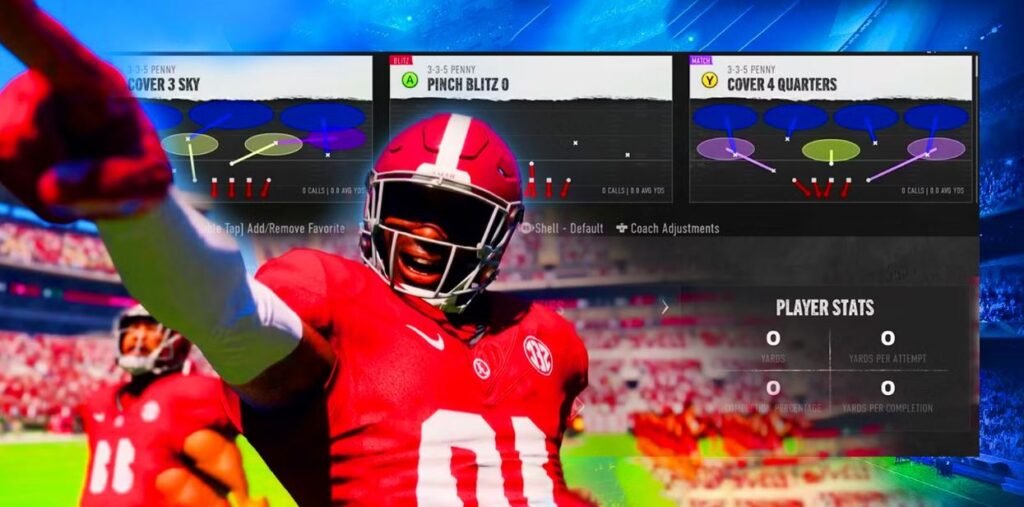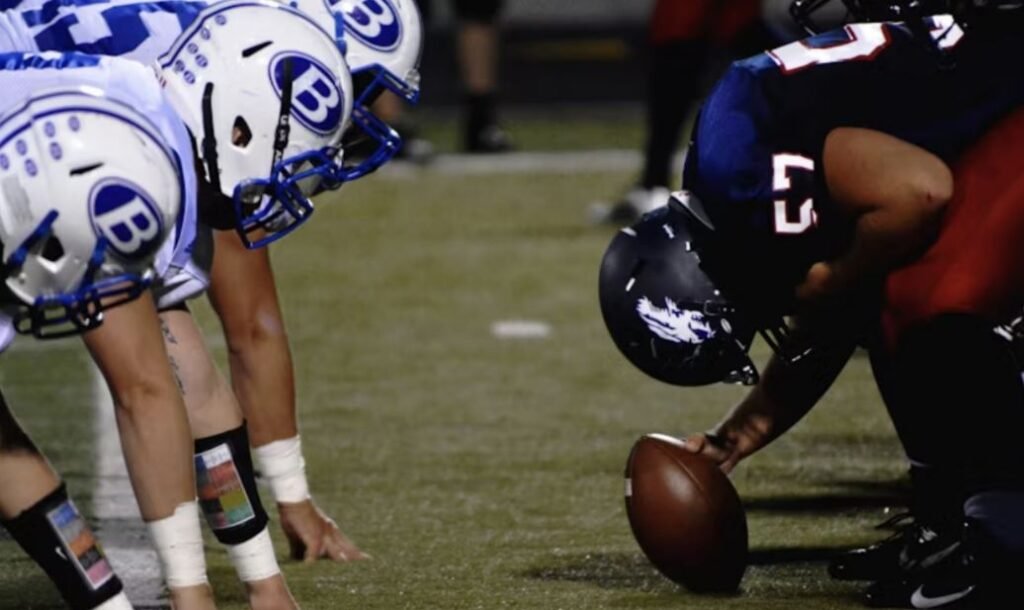In college football, a strong defense can be the difference-maker between a good team and a championship contender. While offensive highlights often dominate the headlines, successful teams are built on well-rounded strategies, with the defensive playbook playing a crucial role. What is the best defensive playbook in college football? This question doesn’t have a one-size-fits-all answer, as the effectiveness of a playbook depends on factors like team strengths, coaching style, and opponent tactics. However, there are certain defensive playbooks and strategies that have proven highly effective in the college game. In this article, we’ll explore what makes a great defensive playbook, highlight some of the top college defenses, and discuss key concepts to include in an elite defensive playbook.
The Role of a Defensive Playbook in College Football
A defensive playbook is a comprehensive guide outlining the strategies, formations, and plays used to counter offensive schemes. In college football, defensive playbooks are built to adapt to various offenses and designed to maximize a team’s ability to stop the opponent, create turnovers, and control field position. A great defensive playbook offers flexibility, allowing coaches to adjust tactics depending on the opponent’s strengths and weaknesses.
Key elements of a successful college football defensive playbook include a strong base formation, situational packages, and a range of coverage and blitz options. An effective defensive playbook aims to disrupt the offensive rhythm, force turnovers, and apply pressure on the quarterback while maintaining coverage on potential receivers.
Elements of an Effective Defensive Playbook
1. Base Formations
The foundation of any defensive playbook is its base formation, which serves as the default alignment for the defense. Common base formations include the 4-3, 3-4, 4-2-5, and 3-3-5, each with unique advantages depending on personnel and strategy. Here’s a breakdown of these formations:
- 4-3 Defense: With four linemen and three linebackers, the 4-3 is one of the most traditional defensive setups. It’s known for its balanced approach, allowing teams to defend both the run and pass effectively. The 4-3 is particularly strong against power running teams but can be adapted to add extra pass rushers on passing downs.
- 3-4 Defense: In this formation, three linemen and four linebackers offer flexibility for blitzes and coverage options. The 3-4 is well-suited for teams with athletic linebackers who can drop into coverage or rush the passer. This formation is effective against spread offenses, as it allows for versatile adjustments based on offensive personnel.
- 4-2-5 Defense: This formation includes four linemen, two linebackers, and five defensive backs, making it ideal for defending against pass-heavy offenses. The extra defensive back provides coverage support, allowing the team to match up well against multiple receiver sets and spread formations.
- 3-3-5 Defense: Similar to the 4-2-5, this formation features three linemen, three linebackers, and five defensive backs. The 3-3-5 provides flexibility and is commonly used by teams facing up-tempo, spread offenses. With three safeties on the field, the defense can disguise coverages and bring additional blitzers from different angles.
2. Coverage Schemes
Coverage schemes are crucial for defending against the passing game. A well-rounded defensive playbook includes a variety of coverage schemes to prevent big plays and adapt to different offensive styles. Common coverage schemes in college football include:
- Cover 1 (Man-Free): This is a man-to-man coverage scheme with one deep safety responsible for covering the middle of the field. It allows defenders to stay close to receivers, making it easier to contest passes. The free safety provides deep support, helping prevent long completions.
- Cover 2: In Cover 2, two safeties split the field in half, each covering a deep zone. This coverage is effective against short to intermediate passes, as cornerbacks stay closer to the line of scrimmage, disrupting routes. However, Cover 2 can be vulnerable to deep passes up the middle.
- Cover 3: The field is divided into three deep zones, typically covered by two cornerbacks and a safety. Cover 3 is effective against deep passes and is often used in situations where the defense anticipates a pass. This coverage helps limit big plays but may leave room for shorter completions.
- Cover 4 (Quarters): Each deep zone is split among four defenders, usually two safeties and two cornerbacks. Cover 4 is useful for preventing deep passes, as it provides extensive downfield coverage. This scheme is effective in late-game situations where preventing long completions is the priority.
3. Blitz Packages
Blitzing is a powerful tool for disrupting the offense by applying pressure on the quarterback. A great defensive playbook includes multiple blitz packages to keep the offense guessing and force quick decisions. Effective blitz packages often include:
- Zone Blitz: In a zone blitz, one or more defenders rush the quarterback, while other defenders drop back into zone coverage. This allows the defense to apply pressure without sacrificing coverage, making it harder for the quarterback to identify open targets.
- Safety Blitz: A safety blitz involves one of the safeties rushing the quarterback, typically from outside the tackle. This blitz can catch the offense off-guard, especially if the safety disguises his intentions by lining up as if he’s in coverage.
- Linebacker Blitz: Linebacker blitzes send one or more linebackers to attack the quarterback. This is a common tactic in 3-4 defenses, where linebackers can line up in various spots, disguising their intentions. Linebacker blitzes are effective for creating pressure up the middle.
- Corner Blitz: In a corner blitz, one of the cornerbacks rushes the quarterback. This can be particularly effective against teams that frequently throw short passes or screens, as it brings pressure from an unexpected angle. However, it may leave the defense vulnerable to quick throws to the vacated area.
Notable College Football Defensive Playbooks
Several college football programs have become renowned for their defensive schemes. Here are some examples of notable defensive playbooks that have made a significant impact on the game:
Alabama Crimson Tide (Nick Saban’s Defense)
Nick Saban’s defense at Alabama is known for its complex, hybrid schemes that adapt to various offensive styles. Saban’s playbook includes a mix of 3-4 and 4-2-5 formations, allowing Alabama to counter both power running teams and pass-heavy offenses. The Crimson Tide’s defense emphasizes disciplined coverage, strong pass rushers, and a focus on forcing turnovers. Saban’s playbook is regarded as one of the most advanced in college football, incorporating sophisticated zone and man coverages.
Clemson Tigers (Brent Venables’ Defense)
Under former defensive coordinator Brent Venables, Clemson’s defense became one of the most feared units in college football. Venables’ playbook is known for its aggressive blitzing schemes, including creative zone blitzes and stunts that confuse offensive lines. Clemson’s 4-3 defense often features a high level of pre-snap movement and disguised coverages, making it difficult for opposing quarterbacks to read the defense.
Georgia Bulldogs (Kirby Smart’s Defense)
Kirby Smart’s defensive playbook at Georgia, influenced by Nick Saban, uses a 4-2-5 base formation that prioritizes speed and athleticism. Georgia’s defense is known for its versatility, as it can adapt to different offensive styles and includes a range of coverage schemes. Smart emphasizes situational defense, with specific packages for third downs and red-zone situations. The Bulldogs’ defense excels in maintaining gap integrity and limiting big plays, using a mix of man and zone coverages.
Iowa Hawkeyes (Phil Parker’s Defense)
Iowa’s defense, led by Phil Parker, is known for its Cover 2 zone scheme that emphasizes discipline and sound fundamentals. The Hawkeyes’ defensive playbook focuses on preventing big plays, using a 4-3 base formation and maintaining solid zone coverage across the field. Parker’s defense is effective at forcing turnovers, particularly interceptions, by encouraging defensive backs to keep their eyes on the quarterback and anticipate throws.
Building a Successful Defensive Playbook
Creating the best defensive playbook for college football requires attention to detail, adaptability, and knowledge of the team’s strengths. Here are some key factors to consider when building a successful defensive playbook:
1. Adapt to Opponent’s Strengths and Weaknesses
A flexible defensive playbook considers the tendencies of the opposing team. For example, against a pass-heavy team, the defense may prioritize nickel or dime packages, while a run-heavy team may require a stronger front seven alignment. Scouting reports are crucial, as they allow the defense to adjust its playbook to exploit weaknesses and counter the opponent’s strengths.
2. Use Situational Packages
An effective defensive playbook includes specialized packages for specific situations, such as third-and-long, red-zone defense, and goal-line stands. These packages feature personnel and play calls optimized for the situation, allowing the defense to maximize its effectiveness in high-pressure moments.
3. Prioritize Turnover Creation
A great defense not only stops the offense but also creates opportunities for turnovers. By incorporating plays that emphasize ball-stripping techniques, interception opportunities, and pressure on the quarterback, a defensive playbook can increase the likelihood of game-changing turnovers. Many successful college defenses prioritize drills and tactics that focus on turnover creation.
4. Balance Coverage and Pressure
A well-rounded defensive playbook strikes a balance between coverage schemes and blitz packages. Too much blitzing can leave the secondary exposed, while excessive zone coverage can give the quarterback too much time. By mixing up coverages and selectively deploying blitzes, a defense can keep the offense guessing and limit big plays.
FAQs
What is the most common base defense in college football?
The most common base defenses in college football are the 4-3, 3-4, and 4-2-5 formations. These formations provide a strong balance of pass coverage and run defense and are adaptable to a variety of offensive schemes. Many college teams tailor their base defense to fit their personnel and the styles of offense they frequently face.
Do all college teams use the same defensive playbook?
No, each college team has its own defensive playbook designed by the coaching staff to fit the team’s strengths and strategies. Defensive playbooks are unique to each program, taking into account the skill set of the players, the coaching philosophy, and the types of offenses the team will face.
Why do college defenses use zone blitzes?
Zone blitzes are a popular tool in college defenses because they allow the defense to apply pressure on the quarterback while maintaining adequate coverage. In a zone blitz, some players rush the quarterback while others drop back into zone coverage, creating confusion and limiting the offense’s ability to identify open receivers.
How do college defenses stop spread offenses?
College defenses use a variety of strategies to stop spread offenses, including deploying nickel and dime packages with extra defensive backs. They may also use versatile formations like the 4-2-5 or 3-3-5 to cover multiple receivers while maintaining pass rush options. Defensive coordinators often prioritize speed and athleticism to match up with the fast-paced nature of spread offenses.
What are the advantages of a 4-2-5 defense?
The 4-2-5 defense offers advantages in pass coverage by including five defensive backs, allowing the defense to match up well against multiple receiver sets. It also provides flexibility, as the extra defensive back can be used in coverage, run support, or blitz packages. This formation is effective against spread offenses and pass-heavy teams.
Can defensive playbooks be changed during the season?
Yes, defensive playbooks can be adjusted throughout the season based on the team’s performance, injuries, and upcoming opponents. Defensive coordinators often make modifications to the playbook to address weaknesses, incorporate new strategies, and counter specific offensive schemes.
Conclusion
In conclusion, the best defensive playbook in college football combines flexibility, pressure, and coverage to create a well-rounded defensive strategy. From base formations like the 4-3 and 4-2-5 to situational packages and turnover-focused plays, a great playbook is essential for any team aiming to compete at a high level. While there’s no one-size-fits-all answer to the best defensive playbook, teams like Alabama, Clemson, and Georgia showcase the power of tailored, adaptable defenses. For college teams and fans alike, understanding these defensive strategies can provide deeper insights into what makes a successful football program.




